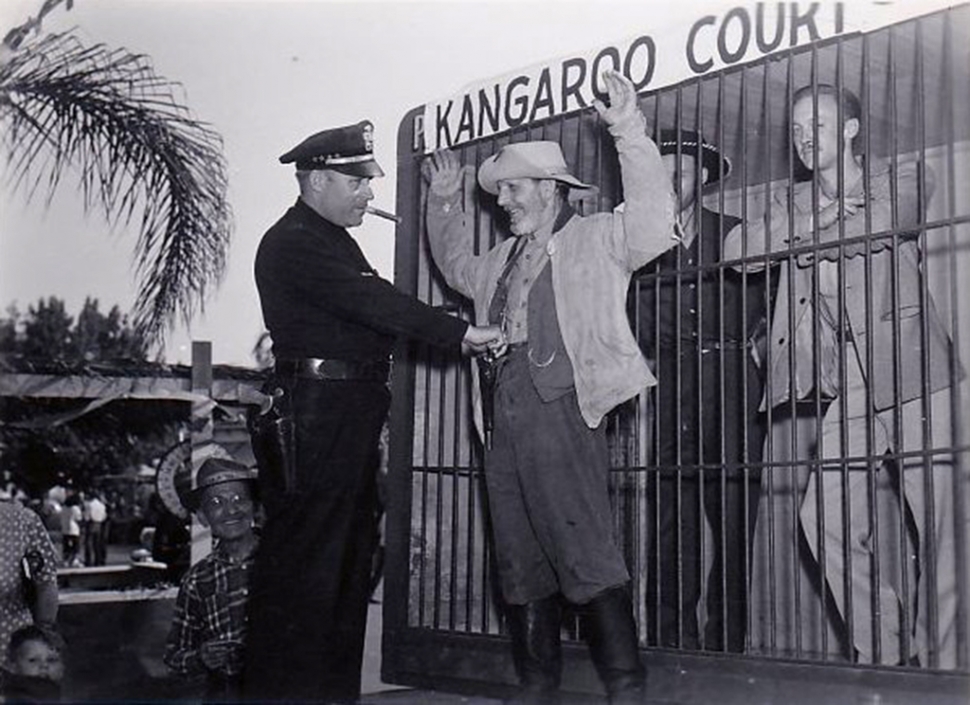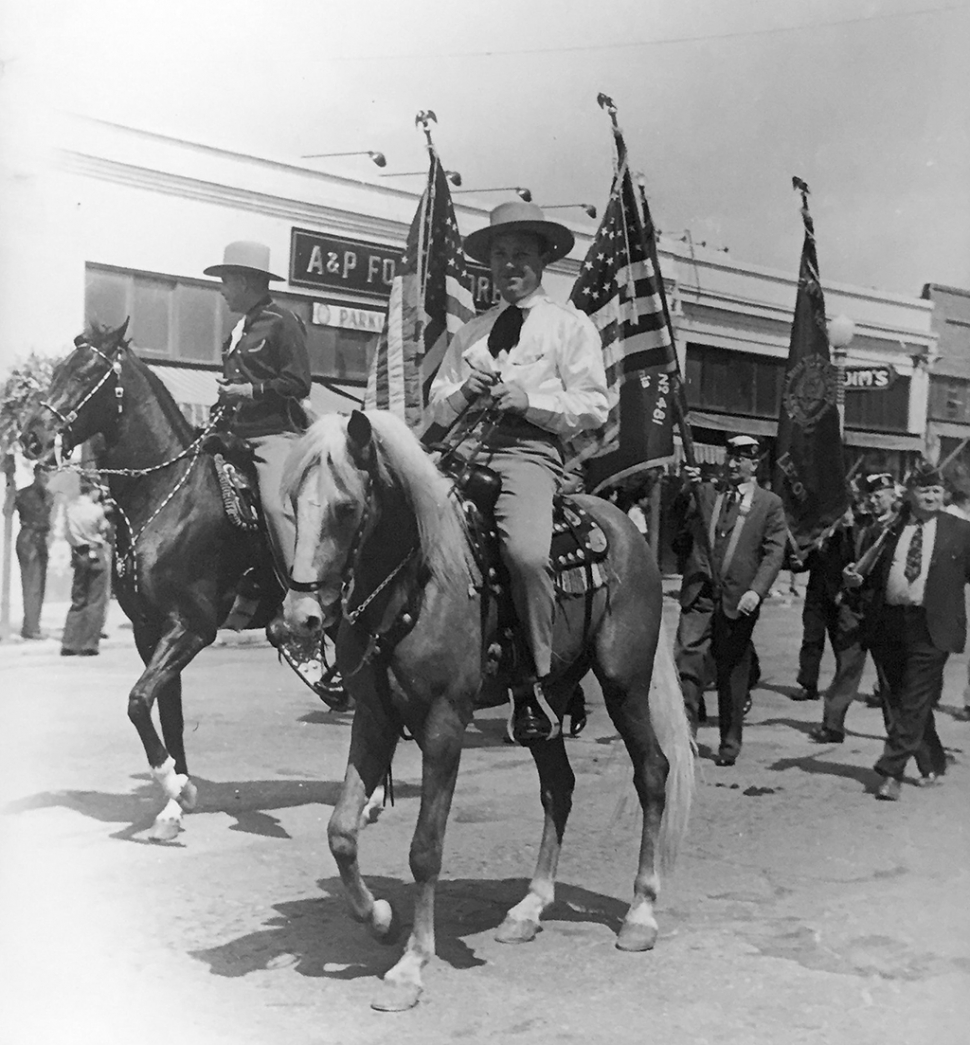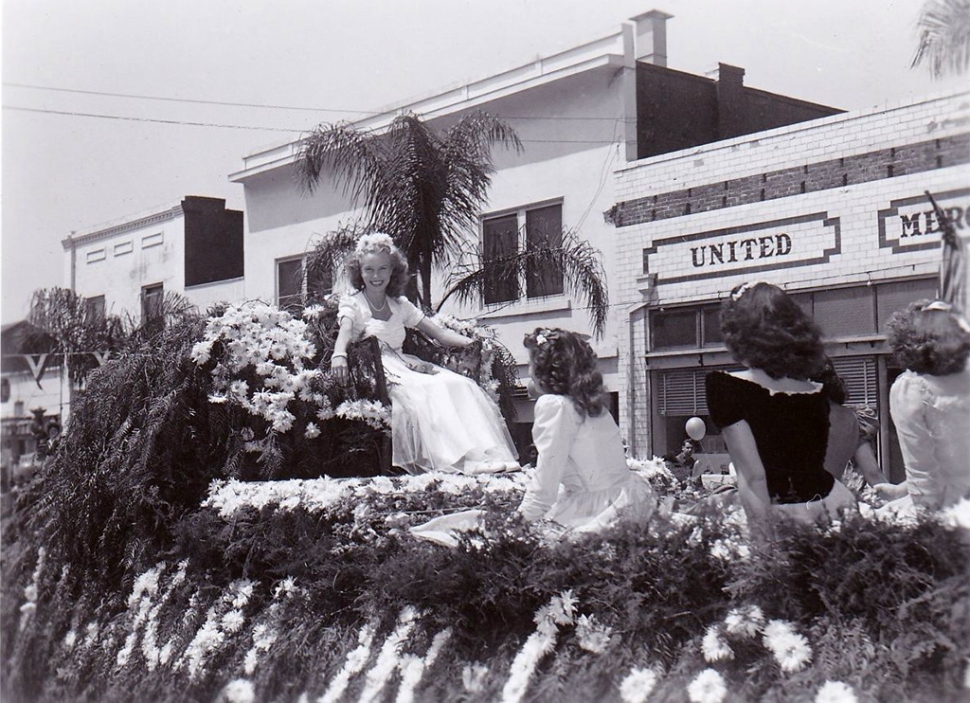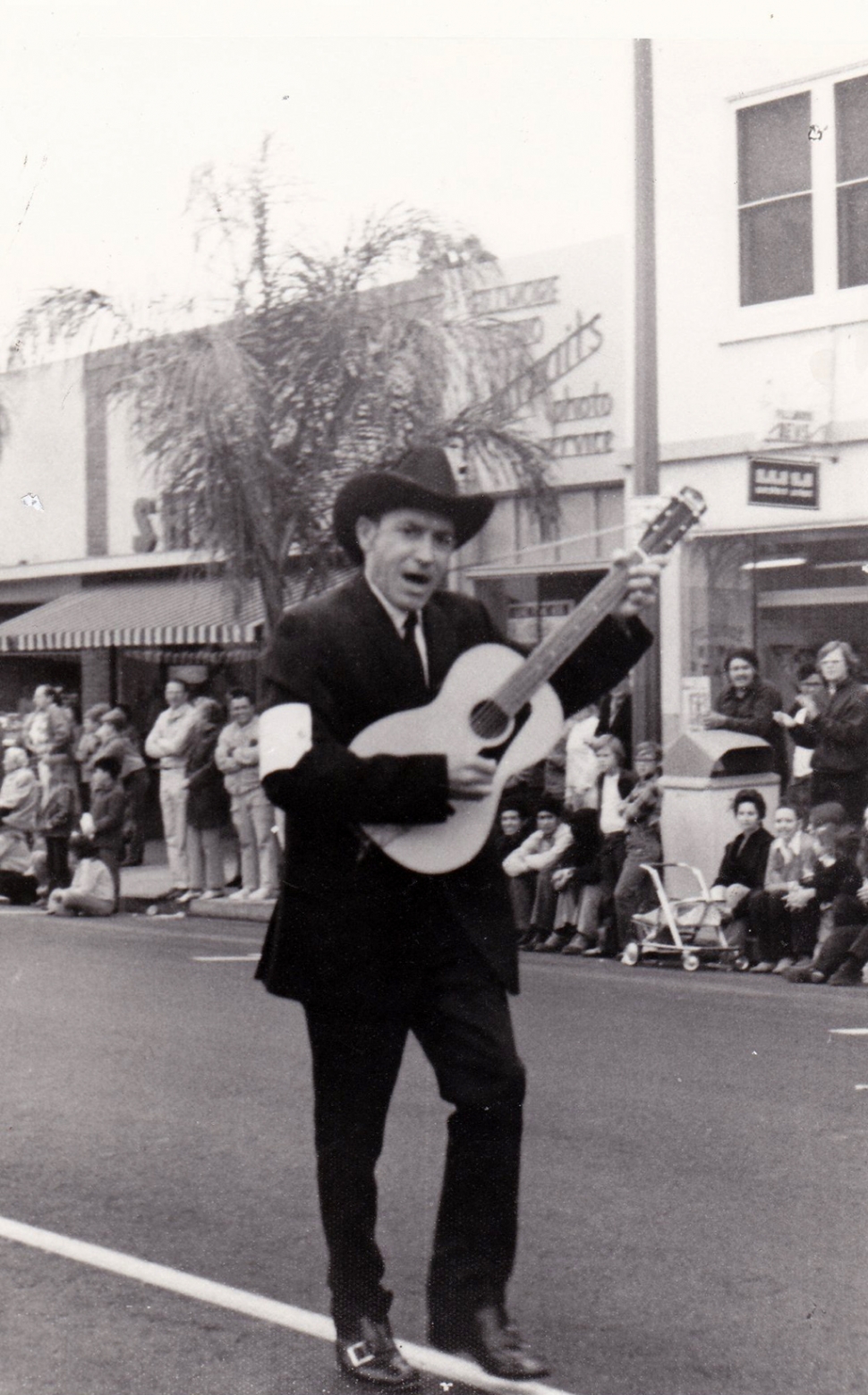|
Fillmore Frontier Days 1946
 Earl Hume and George Nadin in front of the “jail” for the beardless men of Fillmore were encouraged to grow beards for the festival, with prizes awarded based on audience applause. Photos courtesy Fillmore Historical Museum. By Gazette Staff Writers — Wednesday, June 1st, 2022
 Bill Manning, County Sheriff Howard Durley, Ralph (Curly) Burson at extreme right.  Fillmore’s Festival Queen of 1946 Queen Ruth Johnson and Ruth Johnson her court Jackie Hampson, Billie Barden, Inez Phillips and Glendolyn Stull as the ride in the Parade.  George Espinoza. Courtesy Fillmore Historical Museum It was May 1946. World War II had been over not yet a year. Fillmore was slowly returning to some sort of normalcy. Most servicemen were returning home, though even those that came back were changed forever by their experiences. But Fillmore was ready to shake off all that. The last festival had been in May 1941. Not enough time to get something ready for May, but maybe June? The Fillmore Junior Chamber of Commerce, more well-known as the Jaycees, had just reorganized and were ready to take on a new challenge. The Fillmore-Piru area needed a new emergency vehicle, but that cost money, money that was still in short supply, so a fundraiser was needed. How about a festival? The first mention of a Fillmore Festival was in the May 10, 1946, Herald in a report on the Jaycee’s meeting of that week. By the next week, the City Council had approved the idea and June 22, 1946, was chosen as the date of Fillmore Frontier Festival, and with John Oxford named as overall chair. It would only last one day, but it would be a full day of events, starting off with a parade at 10:00 A.M. The Festival Queen would be chosen based on votes. Tickets were obtained from local merchants, one ticket for each dollar’s worth of merchandise purchased or the tickets could be bought outright for ten cents each, three for twenty-five cents. The contestant with the most votes would become festival queen with the four runners-up as her court. The race for Queen was intense with the standings posted at City Hall and reported in the newspaper. Two weeks before the festival Glendolyn Stull led with 1,974 votes, followed by Ruth Johnson with 1,633 and Billie Barden with 1,596. On the Wednesday before the Festival, Jackie Hampson was leading with 4,904 votes; Ruth Johnson was still in second with 4,260 votes followed by Billie Jean McKim with 3,830 votes. In the end, Ruth Johnson swept the field with 13,008 votes. Her court was made up of Jackie Hampson, Billie Barden, Inez Phillips and Glendolyn Stull, all of them gracing the Queen’s Float in the parade. Grand Marshall of the parade was Ventura County Sheriff Howard Durley. The barbecue, headed up by Glen Fansler and Walter Hall was held on Sespe Avenue “under the peppertrees” with the newly formed VFW Auxiliary serving. It was estimated that over one thousand people were fed. One of the more unusual events was the “Dive Bombing” by the US Army. This consisted of two US Army Air Corp planes. One did aerial acrobatics while the other flew low in an AT6 and dropped pamphlets many of which contained gift certificates redeemable at local businesses. Unfortunately many of the pamphlets landed on the roofs of business along Central Avenue and were never redeemed. During the afternoon, a Horse Show was held on the High School football field. John Galvin, in disguise with a fake beard, stove pipe hat and frock coat, emceed the event. In the windows of City Hall, people could view Al Lamberg’s extensive collection of clocks through the ages. A hobby show was simultaneously being held at the “IOOF Hall, next to the Theatre.” Over a thousand people were estimated to go through the show. The highpoint of the hobby show was Frank Erskine’s display of woodcraft, including a tiny desk, complete with telephone, labeled “For the man with a small business.” The men of Fillmore had been encouraged to grow beards for the festival, with prizes awarded based on audience applause. George Nadin and Ken Fine were deemed to be the winners. Gentlemen who failed to grow a beard were subject to arrest and fines. City Marshal Earl Hume was kept busy enforcing this one-day ordinance, even arresting City Attorney John Galvin who was spotted through his disguise. Concession stands lined Central Avenue run by local groups including a shooting gallery run by Oliver Corl, Jr.; a slingshot gallery in charge of Dr. Art Fuschetti; orange juice stands run by the American Legion Auxiliary; an ice cream truck with the Methodist ladies in charge; and several games of skill run by the Jaycees, Lions and other groups. The evening started out with an amateur show. Entries included the ever-popular George Espinoza from Santa Paula as well as three dance groups under the direction of the high school athletic teacher, Mrs. Aldona Glover. Lee Chriswell won first place with “Indian Love Call.” Mrs. Glover’s groups took second and third places. Judges were Frank Erskine, John Galvin (who must have been let out on bail) and Mrs. John Keefe. The hectic day ended with a street dance on Central Avenue. A six-piece dance band from Ventura, the Melody Men, played for over 800 couples. The dance was interrupted at 10 pm when the Ford Deluxe Tudor Sedan was given away. Although Vic Casner bought the first ticket with a silver dollar, it was won by George Matosian of Los Angeles. So, all in all, how did the festival stack up? According to Earl Hume the day was “gratifyingly free from disturbances.” Financially, the event not only paid for the needed emergency vehicle but showed a $200 profit! |
